Discover 11 hidden attractions, cool sights, and unusual things to do in Bridgwater (United Kingdom). Don't miss out on these must-see attractions: Burrow Mump, Westonzoyland Pumping Station Museum, and St George's Church. Also, be sure to include Bridgwater Town Hall in your itinerary.
Below, you can find the list of the most amazing places you should visit in Bridgwater (England).
Table of Contents
Burrow Mump

Tourist attraction in Burrowbridge, England. Burrow Mump is a hill and historic site overlooking Southlake Moor in the village of Burrowbridge within the English county of Somerset. It is a scheduled monument, with the ruined church on top of the hill a Grade II listed building.
The hill stands at a strategic location overlooking the point where the River Tone and the old course of the River Cary join the River Parrett. Although there is some evidence of Roman visitation, the first fortification of the site was the construction of a Norman motte. It has been called King Alfred's Fort, however there is no proof of use by Alfred the Great. A medieval church was built on the hill in the 15th century. The current ruined church on top of the hill was built in 1793. The land and ruin were donated to the National Trust in 1946 as a war memorial.[1]
Address: Main Rd, TA 7 0 Othery
Westonzoyland Pumping Station Museum
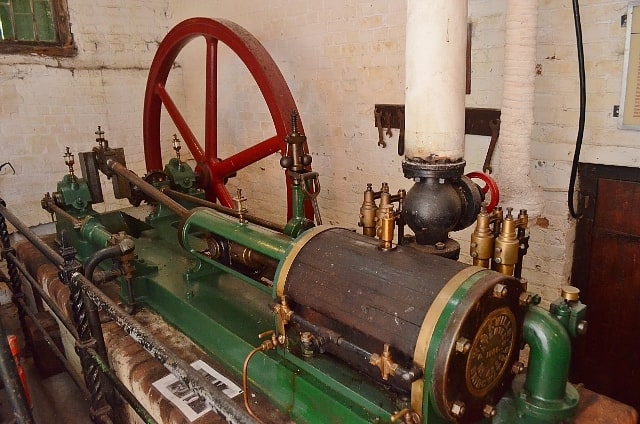
Museum in Westonzoyland, England. The Westonzoyland Pumping Station Museum of Steam Power and Land Drainage is a small industrial heritage museum dedicated to steam powered machinery at Westonzoyland in the English county of Somerset. It is a Grade II* listed building.
The museum is housed in an 1830 brick-built pumping station which was the first of several similar pumping stations to be built on the Somerset Levels which are prone to flooding. The main attraction is the 1861 Easton and Amos steam engine and pump, the only one still in its original location and in working order. The museum, which is run by a charity, also restores and displays a number of other steam engines and pumps. The steam for the moving exhibits is provided by a Marshall portable boiler. The Westonzoyland Light Railway, a short 2 ft (610 mm) narrow-gauge railway runs the length of the site and is used to carry wood for the boiler.[2]
Address: Westonzoyland Pumping Station Hoopers Drove, TA7 0LS Bridgwater
St George's Church
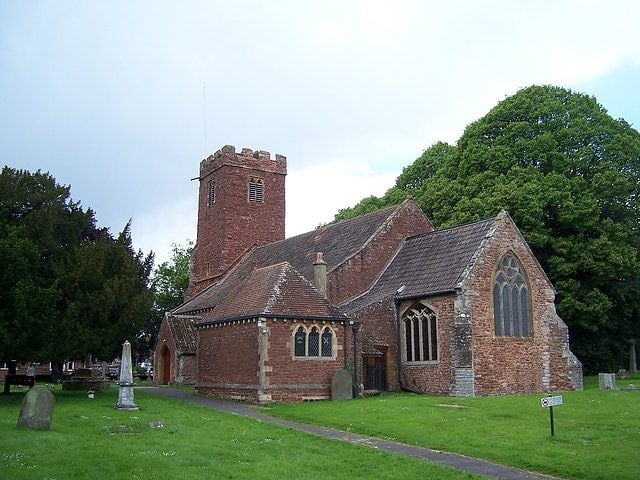
Anglican church in Wembdon, England. The Anglican St George's Church was founded in the 13th century in the village of Wembdon within the English county of Somerset. The current building dates from the 14th and 15th century but was largely rebuilt in 1868 after a fire. It is a Grade II listed building.[3]
Address: The Green at Wembdon, Homberg Way, Bridgwater
Bridgwater Town Hall
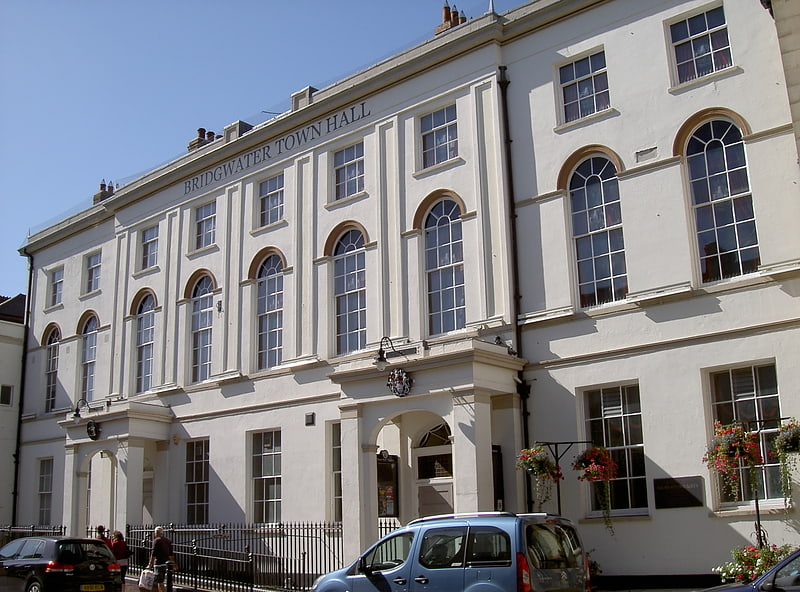
Bridgwater Town Hall is a municipal building in the High Street, Bridgwater, Somerset, England. The town hall, which was the headquarters of Bridgwater Borough Council, is a Grade II listed building.[4]
Address: 38-44 High Street, Bridgwater
Scott Cinema
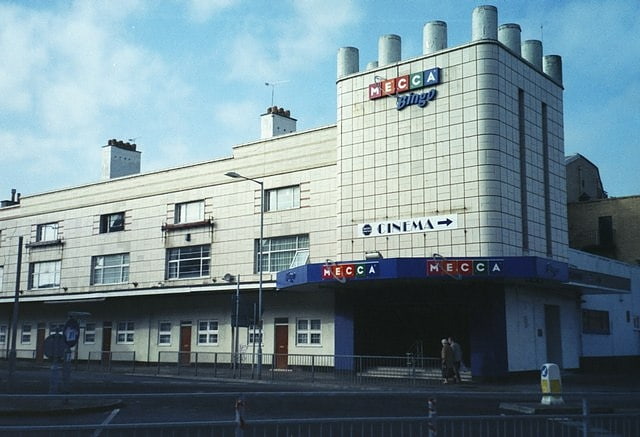
Scott Cinema is a cinema in Bridgwater, Somerset England. Built in 1936, it is notable for its Art Deco style.[5]
Church of the Holy Trinity
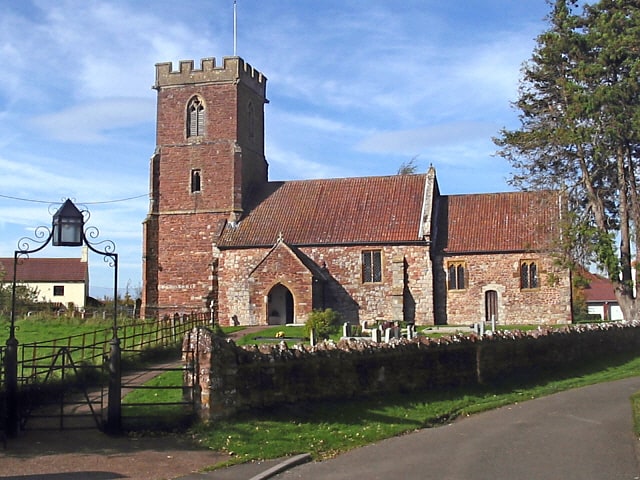
The Anglican Church of the Holy Trinity at Chilton Trinity in the English county of Somerset was established in the 13th century. It is a Grade II* listed building.[6]
Willow Man
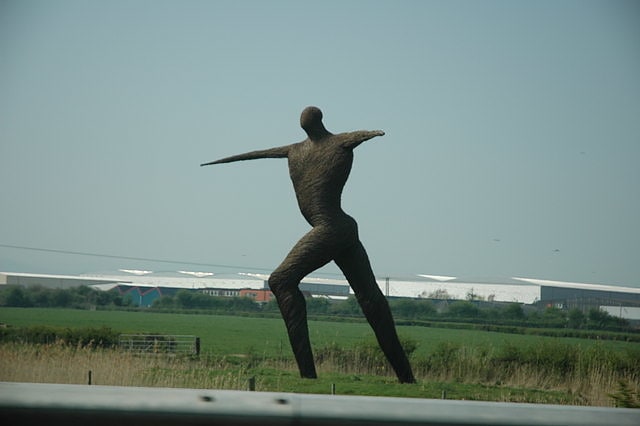
Sculpture by Serena de la Hey. Willow Man is a large outdoor sculpture by Serena de la Hey. It is in a field to the west of the M5 motorway, near Bridgwater in Somerset, South West England, near to the Bristol to Exeter railway line and south of junction 23 of the motorway. It stands 40 feet, with a 16-foot arm span, and is made of black maul willow withies woven over a 3-tonne steel frame.
Willow Man was commissioned by South West Arts, for the Year of the Artist, and the Moate family the land owner. The sculpture was unveiled in September 2000. It marks the millennium and celebrates the role of willow in the ecology and craft tradition of the Somerset Levels.
The first sculpture was burnt down in an arson attack on 8 May 2001. The sculpture was rebuilt by the same artist in October 2001, and a 130-foot (40 m) circular moat was excavated around it as a precaution against further attacks.
A notable landmark, it can be described as a somehow permanent Wicker man sculpture. The sculpture is popularly known as Withy Man, or Angel of the South in reference to Antony Gormley's sculpture Angel of the North. The name Angel of the South is now commonly used also as the unofficial title for a proposed colossal sculpture in Ebbsfleet.
In September 2006, Willow Man received "a £20,000 hair cut". The sculptor Serena de la Hey said that she thought many local birds had been using the material for their nests. When the artist saw her sculpture she was "shocked to see the wear and tear".
In 2018, an appeal to raise funds for the repair of the structure failed to meet its target. By 2021, the structure had further deteriorated with the head and arms having lost form.[7]
Address: Beside the M5, TA 6 4 Bridgwater
Kilve Chantry
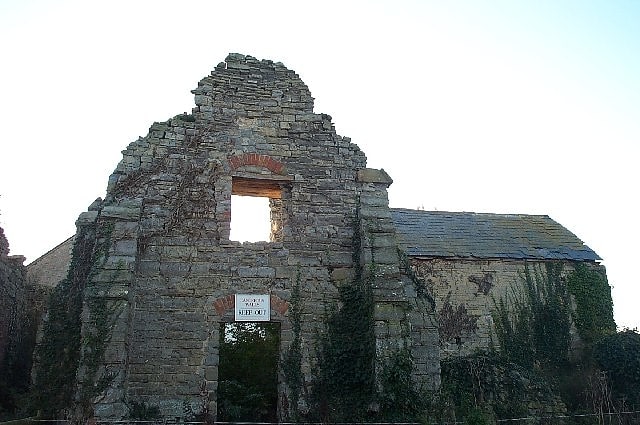
Monastery. Kilve Chantry was a religious site in Kilve, Somerset, England.
The Chantry was founded in 1329, when a brotherhood of five monks was employed to say Mass for their founder, Simon de Furneaux. The Roll of Incumbents shows that several successive chantry priests were incumbents of Kilve parish. It was dissolved in the late 14th century. The chantry seems to have fallen into a ruin long before the dissolution of the monasteries, and for centuries it served as a barn for the adjacent farm.
The building stayed in use for many years, possibly by smugglers, until a fire in 1848, caused by an attempt to destroy evidence of contraband brandy. Some parts of the chantry complex have survived intact and are now 'Chantry' and 'Priory Cottages', but the large solar wing is now ruined.
It is now a Grade II* listed building and Scheduled Ancient Monument, which is listed on English Heritage's Heritage at Risk Register as "very bad" with a priority rating of "A", the highest possible.[8]
Church of St Mary
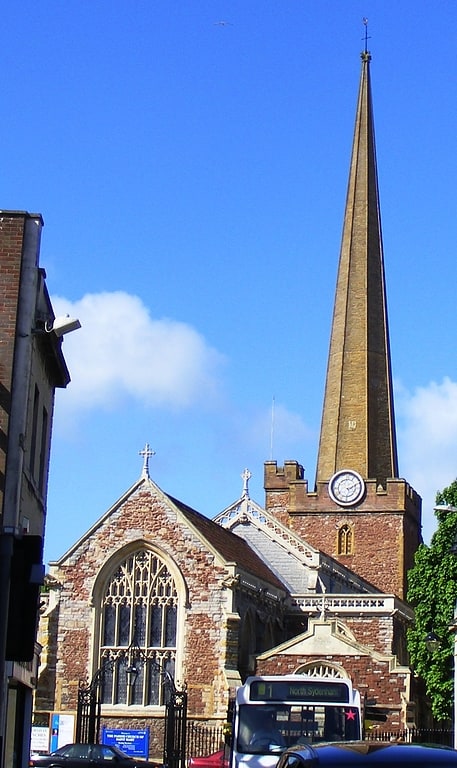
Building in Bridgwater, England. The Church of St Mary in Bridgwater, Somerset, England was built in the 13th century, and has been designated as a Grade I listed building. It is dedicated to Saint Mary, the Virgin. The first vicar was recorded c1170
The building is on the site of an earlier church which was rebuilt by William Briwere in the early 13th century.
St Mary's church has a north porch and windows dating from the 14th century. During the 15th and 16th centuries chapels were added, modifying the nave and the chancel extended.
In July 1685, during the Monmouth Rebellion, the Duke of Monmouth watched from the tower as the forces of King James II assembled, at Westonzoyland, under the command of the Earl of Feversham prior to the Battle of Sedgemoor. The spire, which was built in 1367, is 114 feet 7.5 inches (34.938 m) high and sits on top of the 64 feet (20 m) tower. The spire was split by lightning in 1814 and repaired the following year. On the face of the tower is a clock installed in 1869 replacing earlier clocks which had been on the tower since 1393. Within the tower were originally eight bells. The oldest bell dated from 1617 with further bells being added through the 17th and 18th centuries, with the Tenor being added in 1868 and cast by John Taylor & Co. An additional five bells were added to the peal in 2020.
Between 1849 and 1851 major renovation work, by Dickson and Brakspear of Manchester, included the removal of the galleries and box pews; they were replaced by regular pews. Between 1877 and 1878 further alterations were made, and in 1888 the walled up arch between the nave and the tower was opened. In 1902 a vestry was added. In 1937 more alterations were made and the decoration of the Sanctuary simplified.
The interior of the church includes a 13 feet (4.0 m) by 8 feet (2.4 m) painting of the Descent from the Cross of Spanish or Italian origin given to the church by Anne Poulett the Member of Parliament for the Bridgwater constituency in 1775. It was apparently captured when a Spanish warship was taken a prize. The artist is unknown, although it has been controversially attributed to Murillo or Annibale Carracci. The picture is now used as the altarpiece of the church. It also possesses an octagonal 16th century oak pulpit.
The parish is part of the benefice of Bridgwater St Mary and Chilton Trinity which is within the deanery of Sedgemoor.
The Church was closed on 6 June 2016 to allow extensive renovation to be carried out, and reopened in February 2017. The work involved replacing most of the pews by chairs, replacing the floor, and modernising the heating and lighting, as well as upgrading the catering facilities. Four blocks of the pews with about 80 seats were retained, mounted on low plinths and made mobile, allowing full flexibility in the use of the building.[9]
Address: St Mary Street, Bridgwater
Blake Museum
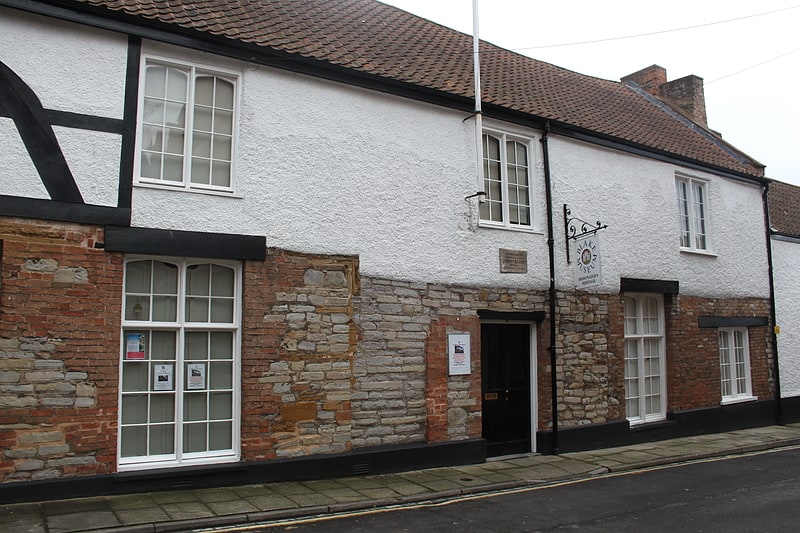
Museum in Bridgwater, England. The Blake Museum is in Bridgwater, Somerset, England at what is believed to be the birthplace of Robert Blake, General at Sea. Since April 2009 it has been run by Bridgwater Town Council with help from the Friends of Blake Museum. It has been an Accredited Museum since 2006. It is next door to the Bridgwater Town Mill, and there are plans to develop this as an extension of the museum.[10]
Address: 4-6 St Mary St, TA6 3LT Bridgwater
Bridgwater War Memorial
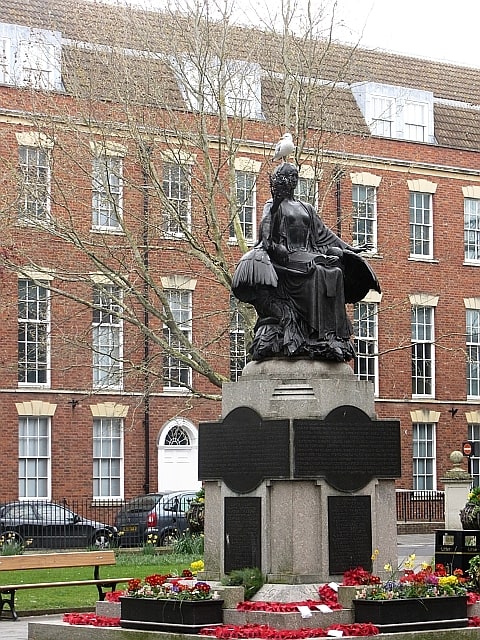
Bridgwater War Memorial is a Grade II* listed war memorial located on King Square in Bridgwater, Somerset, England, on the site previously occupied by Bridgwater Castle. It was designed by John Angel in the mid-1920s. The green figure of the memorial is allegorical, representing "Civilization as a seated female, holding a globe in one hand and with the book of knowledge on her lap."[11]